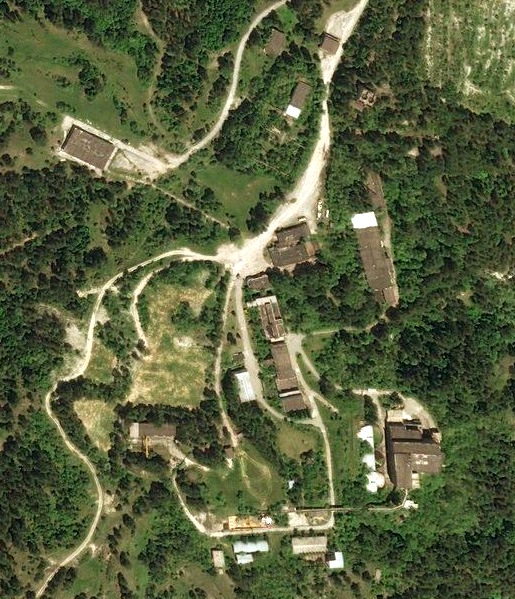On the central square of the Bulgarian ski resort of Bansko, there is a panel showing the radiation background in the foreland of the Pirin hill around-the-clock. Here, at an altitude of about 1,000 meters above sea level, constant monitoring of the radiation background is carried out. And this is not because of the highland conditions.
About 10 kilometers northwest of Bansko, there is Eleshnitsa, a mediocre village with a population of about one thousand only. Meanwhile, not so long ago, it was the ‘uranium capital’ of Bulgaria, next to which there were operating mines and the largest Zvezda (Star) mining and processing plant.
The history of mining the Bulgarian uranium began in 1938, the first deposits were developed by the Germans, who were able to mine about 100 tons of uranium ore. But the Third Reich was not fated to create an atomic bomb and in 1944, all the Bulgaria’s deposits came under the control of the USSR.
In January 1945, Joseph Stalin signed top-secret decree No.7408 addressed to Lavrenty Beria, who supervised the Soviet atomic project, and Vyacheslav Molotov, Minister of Foreign Affairs. Beria was tasked to immediately organize the production of the Bulgarian uranium, and Molotov’s task was to agree on establishing a Soviet-Bulgarian joint-stock company with the Bulgarian government for further prospecting, exploration and mining of uranium ores in its territory. By the middle of 1946, 4.3 tons of uranium ore were delivered from Bulgaria to the USSR. On December 25, 1946, the USSR launched the first nuclear reactor in Europe. In total, from 1946 to 1990, over 16 thousand tons of uranium ore were mined in Bulgaria. There were 48 uranium mines and two mining and processing enterprises operating in the country.
The Zvezda plant in Yeleshnitsa produced its 80% pure concentrate. The product was sent to the USSR, where it was converted into the nuclear charges and fuel for nuclear plants. In 1992, uranium mining in Bulgaria was discontinued, mines and mining and processing plants were mothballed, including the one in Yeleshnitsa, where the mine was completely shut down in 2005. What is this facility like today?
On an area of several square kilometers south-west of the village, you can find numerous remains of the structures and underground passages.
The cyclopean ruins in the mountain dense forest are quite accessible for diggers.
Only the core of the facility, where the uranium enrichment was carried out, is carefully safeguarded - even taking pictures is prohibited near it. Its picture can only be taken from a distance.
or seen in the satellite pictures.

The most dangerous area - the liquid radwaste storage facility - a huge reservoir filled with a liquid containing uranium, arsenic, heavy metals and chemicals, has been reclaimed. Pine trees grow on its bottom and dam.
Now the breath of the terrible uranium ‘genie’ can only be felt in the slightly emanating radon typical of the mineral springs of the Bulgarian mountains, which is actively used in balneotherapy.
In Bulgaria, discussions periodically arise at various levels about recommencing the uranium mining and enrichment operations. This industry is probably more profitable than the tourism that is developing in Bulgaria quite steadily and successfully. Only time will tell whether the country’s government will decide to jeopardize the tourism industry that is currently a key sector of the Bulgarian economy, with more than 10% contribution to the country's GDP.

